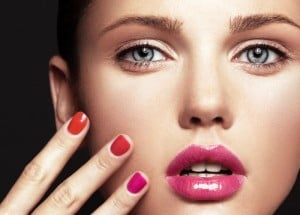 With more and more cynicism over retouching and the U.K. advertising regulators cracking down on misleading claims by beauty advertisers, global and U.S. brands in the beauty category need to consider the tipping point when the status quo of “face plus slogan” no longer persuades as powerfully as it once did.
With more and more cynicism over retouching and the U.K. advertising regulators cracking down on misleading claims by beauty advertisers, global and U.S. brands in the beauty category need to consider the tipping point when the status quo of “face plus slogan” no longer persuades as powerfully as it once did.

Judging from a stroll through any airport duty-free store or a quick flip through the pages of any glossy gossip magazine, beauty advertising all appears homogenous and, dare I say it — boring. The diversity of consumers and brands fails to shine through — the same expressionless women in the same close-up offering the same promise appear time and time again. It seems to be a tried, tested and terrible formula, but times are changing. If the Dove “Real Beauty” campaign told us anything, it was that the consumer is watching and yearning for something different – messages they can respond to and brands they can truly believe in.
Therefore, if the prevailing model of beauty advertising is standing in the face of changing media consumption, criticism over retouching and skepticism over claims, what are some of the mass-market players doing (and what should they be doing) to maintain loyalty, communicate innovation and give their brands meaning in an extremely competitive market?
- Don’t just innovate your products.Brands in the beauty category are great innovators. There are more patents pending within the category than in nearly any other. Almost every major player has at least a half a dozen new product developments a year. With all that product design and research, innovative connection planning should be a natural and needed step. The advertiser who can utilize the red button on your screen or get in bed with a tech company to create meaningful dialogue with the modern consumer will stay relevant as content consumption evolves.
- Speak with emotion and empathy.Women make choices based on these, so much of the time, after all the posturing of formulas, results and benefits, what is left for the consumer to make her decision on? No marketer wants that to come down to a few cents or a promotion. Truly engaging with the consumer’s notion of how she wants to feel from using this product will resonate more than double-entendres and tenuous wordplay.
- Get researching – it will give you more loyalty. Too often we’ve seen market leaders fall out of step with their consumers because their brand ambassadors lost favor or fans. A brand needs to stand for more than a face or two. Investing in research, understanding why women are loyal to their beauty regimens and developing creative that capitalizes on that loyalty is a process worth its weight in analytics.
- Don’t be afraid of diversity.This does not mean showing the same three women in different shades of opacity, but women who stand for different walks of life and are relatable. ‘Want-it-alls’ are smart — they want to see role models, not supermodels or washed up sci-fi actresses. Let’s see more athletes, journalists, musicians, politicians, activists, artists, business leaders, singers, producers, DJs and community leaders in beauty advertising. Photograph inspirational women with stories and compelling beauty, and consumers will respond to the difference.
- Reinvention and collaboration. Like its sister category, fashion, the beauty players are most powerful when offering something on the forward edge of trends. A red nail varnish is much more than just that if it comes in packaging stamped with a Corvette logo and leather handles. Keeping the playing field dynamic and unexpected will mean a brand can pick up newer, younger fans by breaking into unconventional partnerships.
- Don’t always convey makeup as camouflage. It is a tool of expression to reveal and enhance a woman at her best. The advertiser who can communicate real empowerment and the added expressiveness cosmetics can give the “want it all” woman will be the brand that inspires her to really spend.
- Age is not the enemy. It is a fallacy that women want to appear as young as they did in their twenties for an eternity. Showing women who are over forty in advertising exclusively for anti-aging skin care sends one loud message: the beauty sector vilifies the signs of aging rather than exalts the signs of a life lived beautifully. The general population is aging, therefore having spokeswomen who extol beauty irrespective of age will be significant as the consumer ages with her.
- Word of mouth. Recommendations are more likely to convert to purchase than traditional advertising. Once upon a time, it was the neighbors talking over the fence or the lipstick swappers in the powder room on a night out. It’s now an entire sub-industry and ecosystem of bloggers, tutorialists and communities living online co-existing to find the best mascara, the longest lasting lippy or the next best secret in treatments. To ignore this influential group of stakeholders in this day and age spells annihilation by those brands that have been wooing this crowd for years.
- Stand for something.This is not a slogan, but a belief system or a vision that is clear and unmistaken. Really carve out part of the market, take hold of it, and be its vanguard. Appeal to her modesty, her wit, her intelligence. Be inspired leaders to your audience, and you will become leaders of the category.